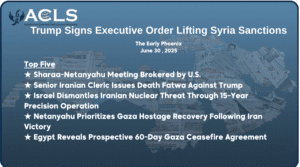When Syrian Dictator Bashar al-Assad used chemical weapons against Syrian communities, he found himself the object of the indignation of the free world. But when he uses his Captagon weapon against them, his attacks are invisible to the outside world, making Assad’s drug victimization of Syrians the perfect crime without trace or noise.
The Syrian regime’s industrial-scale narcotrafficking has now appeared on the American radar screen. The US House of Representatives recently approved a bill aimed at dismantling the production and trafficking of captagon. This legislation takes clear aim at the Assad regime and its allies, since most of the production and distribution networks in Syria and Lebanon belong to them. The largest Captagon manufacturing plant in the region is located in Latakia and directly managed by Bashar al Assad’s brother Maher, head of the Syrian Army’s Fourth Division. Maher runs his narcotics empire with the help of the Iranian regime’s Revolutionary Guards and its Hizballah subsidiary.
ACLS spoke to Syrian activists on the ground who were able to give us a glimpse of the narcotrafficking reality in Assad’s Syria. They report in many Syrian villages and towns, the Assads’ captagon is distributed almost free of charge in schools and marketplaces, especially in the Aleppo and Deir ez Zor regions. In Deir ez Zor, which Hezbollah and the Revolutionary Guards have made their stronghold, the Iranians and their militias operate at least seven Captagon production plants, along with cannabis cultivation grounds.
Syrians understand clearly why Bashar al Assad and his family decided to become one of the world’s foremost drug cartels. In the face of international isolation and pressure, the Captagon industry is essential for the maintenance of Assad’s regime. By organizing his regime into a narcotrafficking cartel, Assad aims to accomplish three objectives at once. The first is to finance the war machine against the Syrian population and thus remain insulated from the effects of international sanctions. The second is to use Captagon as a weapon to destroy Syrian society and render Syrians docile. The third is to use Captagon to launch a revenge attack on regional nations, especially in the Gulf region, that have supported the Syrian cause against his rule.
In Deraa, where the Syrian revolution began in 2011, locals believe the Assad regime purposely introduced Captagon trade and distribution as part of a regime strategy to exterminate the revolutionary-minded population and take revenge on the rebellious southern communities.
Captagon appeared in the south just when conditions had reached a desperate point. After being forced to enter into bad-faith “reconciliation” agreements with the Assad regime and Russia in 2018, locals in the Deraa region found themselves targeted even more intensely by the regime’s security services and cut off from normal trade and humanitarian assistance deliveries.
By 2019, the symptoms of the regime’s siege on the south were violent: suicides of young people and adults, domestic and social violence, and families destroyed. The appearance of Captagon among the region’s youth, being pushed by ِAssad and Hezbollah militias, was the last straw for many southerners.
For almost three years now, southerners have quietly organized civil resistance to the regime-backed drug traffickers as the only solution left available to them. Their grassroots measures have made trafficking more difficult for the Assad-Iran-Hizballah drug cartel. In the Deraa region, local communities have had to band together to try to stop distribution of the drug and establish law and order in the absence of the Syrian state–since the Syrian state itself is the source of the narcotics.
We spoke to local sources to find out how the Deraa communities are fighting the narcotraffickers. One authority related that locals in Deraa have taken the law into their own hands, organizing their own counter-drug enforcement and declaring their own edicts against Captagon distribution.
Several drug traffickers in the Deraa region have been tracked down by local groups who imposed a summary judgment and left the traffickers dead in certain towns and villages. This vigilante justice has had the effect of deterring some traffickers and lowering the level of distribution in the Horan region around Deraa.
Communities in other regions of Syria are watching the southerners’ resistance, but civil society in other regions controlled by the regime cannot organize itself in the way those in Deraa has done. In many areas under regime control, Syrian parents find themselves unable to protect their families and youth from the drugs the Syrian government itself is trafficking. The state that is supposed to be the protector of these communities is in fact their criminal drug pusher.
As for Syrians’ reactions to the recent American measures to dismantle the Captagon trafficking cartel set up by Assad and his allies, the Syrians we spoke to have little faith that America will follow through if it sets another red line. As they told us, they have seen American red lines crossed many times since Barack Obama first articulated one in 2012, and the Assad Regime remains unpunished along with its narcotrafficking business partner the Iranian regime. It will take more than just legislation to overcome Syrians’ skepticism that America is serious this time.



